on
There are a few ways to go about adding egg layers to your life. You can get an incubator and fertile eggs and hatch your chicks, you can buy chicks through the mail, your local feed store, farmers market or from a local breeder. You can also buy pullets (hens about to lay) or you can purchase adult hens that are already laying. Be aware that many people will sell their 2 year old hens as they have slowed down their laying.
But one of the most common ways to get started with chickens is by purchasing newly hatched chicks. In theory chicks from the feed store or hatchery have been sexed and you should only be getting hens – but reality is you are likely to get a rooster or two in the bunch. “Straight-run” chicks have not been sexed and the odds are you will have at least 50% roosters.
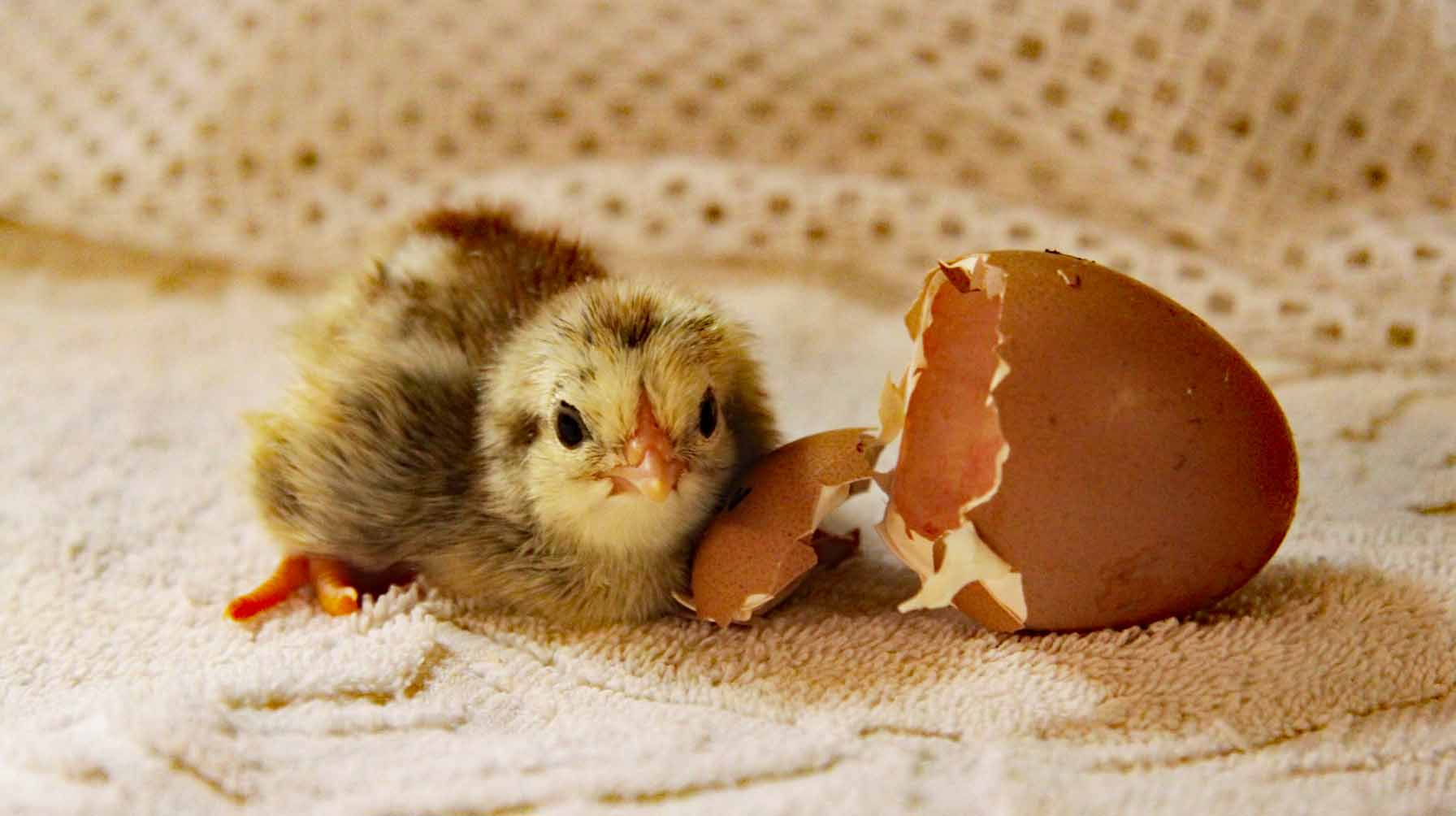
Prepare before your chicks arrive
I cannot emphasize this enough – prepare before you bring chicks home! They grow quickly and have specific needs that must be met to keep them healthy.
Not only do you need to have a brooder box ready for them, you need to have a coop set up already in place as it only takes a few weeks for them to outgrow a brooder box. So have the coop mostly built or a firm delivery date if you are buying one.
If you plan to use the deep litter method as demonstrated by Carolina Coops, that space can work as a brooder box, and the chickens will grow up knowing the hen house as home. Just be sure to close off the nest boxes so they don’t develop the habit of roosting in them as they are growing up.
What you need to have on hand before the chicks come home:
- Brooder: A large cardboard box can work well as a brooder box, just make sure the sides are at least 18″ tall. Plastic tubs can also work, but be very careful as the heat lamp could potentially melt the plastic and start a fire. If you have pets or small children that will be able to access the box you will want a sturdy cover not easily knocked off. Plan on a space of 1 sq ft per chick, and be prepared with a larger space of 2 sq ft as the chickens in a few weeks. Or you can just start off with that much space to begin with. Having enough space is important for the chicks to remain healthy.
- Location: You want your brooder to be in a draft-free location with access to electricity to plug in a heat lamp. If you can keep them in a room with a window that allows in natural daylight it will help with their natural sleep/wake cycles.
- Heat: Choices for keeping your chicks warm has expanded in recent years to far beyond choosing a white or red heating bulb. While a heat lamp is still a very affordable choice, it is also a potentially dangerous one that can result in a fire. A better, although more expensive option, is one of the new radiant heat plates also called brooder plates like the one pictured below. It is more energy-efficient and does a better job of mimicking a mother hen. The height is adjustable so it can grow with the chicks.
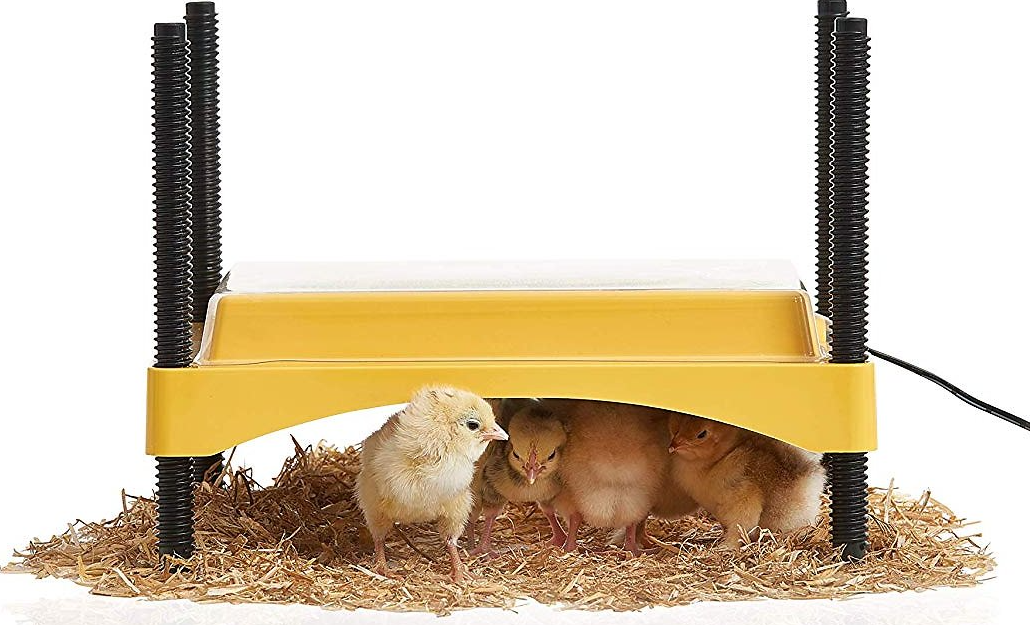
- Bedding: Do NOT use newspapers. It is not absorbent and can be slippery for the chicks to walk on which can cause “spraddle leg“. For the first week, you can use puppy training pads and after that, you can switch to pine shavings. You want your chicks to have a clean, dry and easy to walk on floor in their brooder.
- Food and Water: A chick fountain is by far the best way to give chicks water. Saucers or other make-shift containers spill easily making the brooder area wet and unsanitary. It also prepares them early for a chicken watering bar. A chick feeder needs to be able to accommodate most of your chicks at the same time. Although for the first week you will just scatter feed on the floor so they learn to find it.
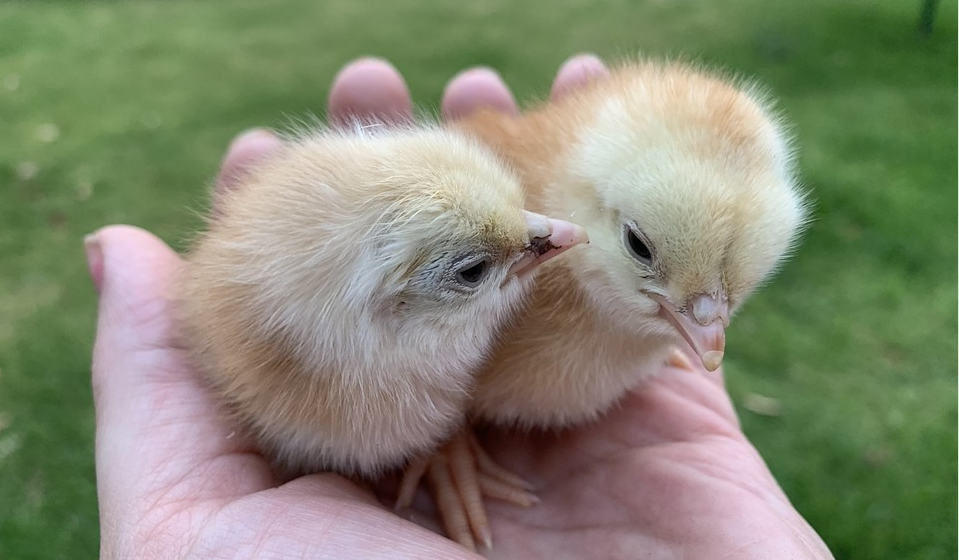
Salmonella Warning
Live poultry may have Salmonella germs in their droppings and on their bodies (feathers, feet, and beaks) even when they appear healthy and clean. The germs can also get on cages, coops, hay, plants, and soil in the area where the birds live and roam. Additionally, the germs can be found on the hands, shoes, and clothing of those who handle the birds or work or play where they live and roam. People become infected with Salmonella when they put their hands or other things that have been in contact with feces in or around their mouth. Young children are especially at risk for illness because their immune systems are still developing and because they are more likely than others to put their fingers or other items into their mouths. It is important to wash your hands immediately after touching poultry or anything in the area where they live and roam, because the germs on your hands can easily spread to other people or things.
Safe handling practices:
- Wash your hands thoroughly with soap and water immediately after touching live poultry or anything in the area where they live and roam.
- Avoid touching your mouth before washing your hands.
- Use hand sanitizer if soap and water are not readily available.
- Adults should supervise hand washing for young children.
- Wash hands after removing soiled clothes and shoes.
- Do not let children younger than 5 years of age handle or touch chicks, ducklings, or other live poultry without supervision.
- Do not eat or drink in the area where the birds live or roam.
- If you collect eggs from the hens, thoroughly cook them, as Salmonella can pass from healthy-looking hens into the interior of normal-looking eggs.
- Do not let live poultry inside the house, in bathrooms, or especially in areas where food or drink is prepared, served, or stored, such as kitchens, or outdoor patios.
- If you have free-roaming live poultry, assume where they live and roam is contaminated.
- Clean equipment and materials associated with raising or caring for live poultry, such as cages or feed or water containers, outside the house, not inside.
Bringing your chicks home
Ages can vary on when you bringing your chicks home. They could be just a few days old, or they could be a week old and starting to show feathering. If they are already eating and drinking you most likely won’t need to dip their beaks in the water to get them started – unless you are switching them to a different watering system and you won’t need to scatter food.
If they are already a week old, you can also start them with regular chicken bedding as well.
It is going to be a new experience for them so try to keep the handling and noise to a minimum and give them a chance to adapt to their surroundings. If you do need to handle them once you have placed them in their new temporary home, remember that quiet slow movements are less threatening, and try to avoid acting like a hawk and swooping in from the sky at them. The movement is something they intuitively know to avoid.
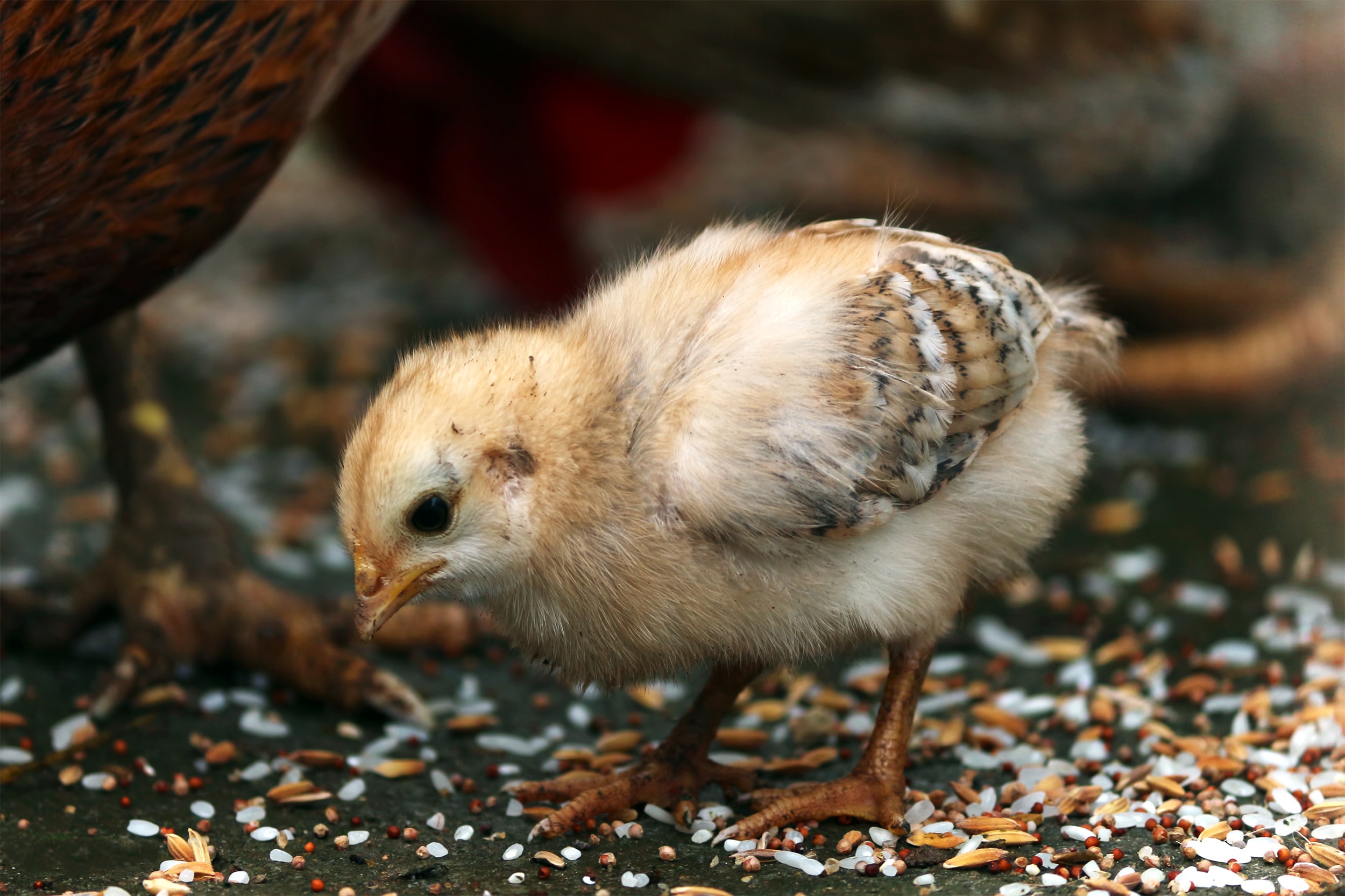
Growing up fast
Chickens grow incredibly fast, so be prepared to add things to their space such as roosts. Chicks love to roost when they’re resting. Provide roosting poles or stacks of bricks so chicks have a place to perch a few inches off the ground to keep them from roosting on the waterer and feeder. This can be as simple as a thumb-sized stick attached to a couple of pieces of 2×4 blocks. Make sure you have enough room on the roost bar so they aren’t fighting for space.
As the chicks start to feather, on warm days put them in a wire pen outside for short periods of time in a draft-free area. Let them scratch at the ground and develop those muscles. Keep an eye on them and provide a tray of fine sand or extra-fine diatomaceous earth so they can dust.
As you work with the chicks, remember that slow movements are less apt to frighten them. Chickens are food motivated and can learn, although they are creatures of habit and a bad habit can be very hard to break. So if you don’t want an adult hen to think of you as a perch, don’t routinely place her on your shoulder or arm.
Around 10 weeks old you will want to switch their feed from “Starter” to “Grower” and then around 18 weeks of age their feed will change to “Layer” to provide them the appropriate nutrition through all the stages.
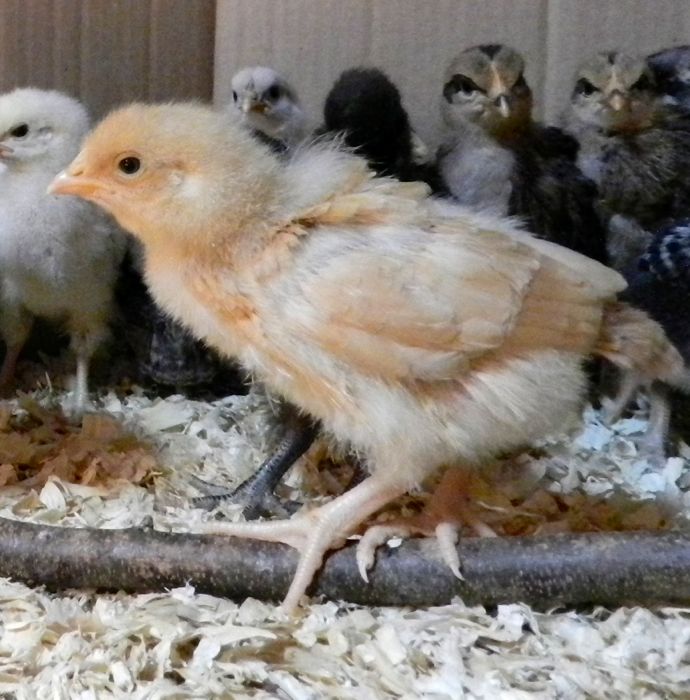
As the chicks grow the roost bar should be raised 2-3 inches off the floor.
When do chickens usually start laying eggs?
On average, young female chickens start laying eggs or “come into lay” around 6 months of age. Some chickens may start laying eggs as early as 16 to 18 weeks old, while others may take upwards of 28 to 32 weeks (closer to 8 months old)! It really depends on the breed and the time of year they were hatched. If they were hatched in the spring they are more likely to lay earlier than ones that were hatched in the fall when daylight is shorter.
One physical sign to watch for is for her comb to become more vividly colored. This indicates she is fertile. When she is in molt and not laying the comb will revert to a pale color. This is also true if she is ill.
The first few eggs a hen lays are often quite small and may not have a yolk. There are sometimes referred to as a “wind egg”. There is nothing wrong with these eggs, it is just the hen’s reproductive tract getting the hang of laying.
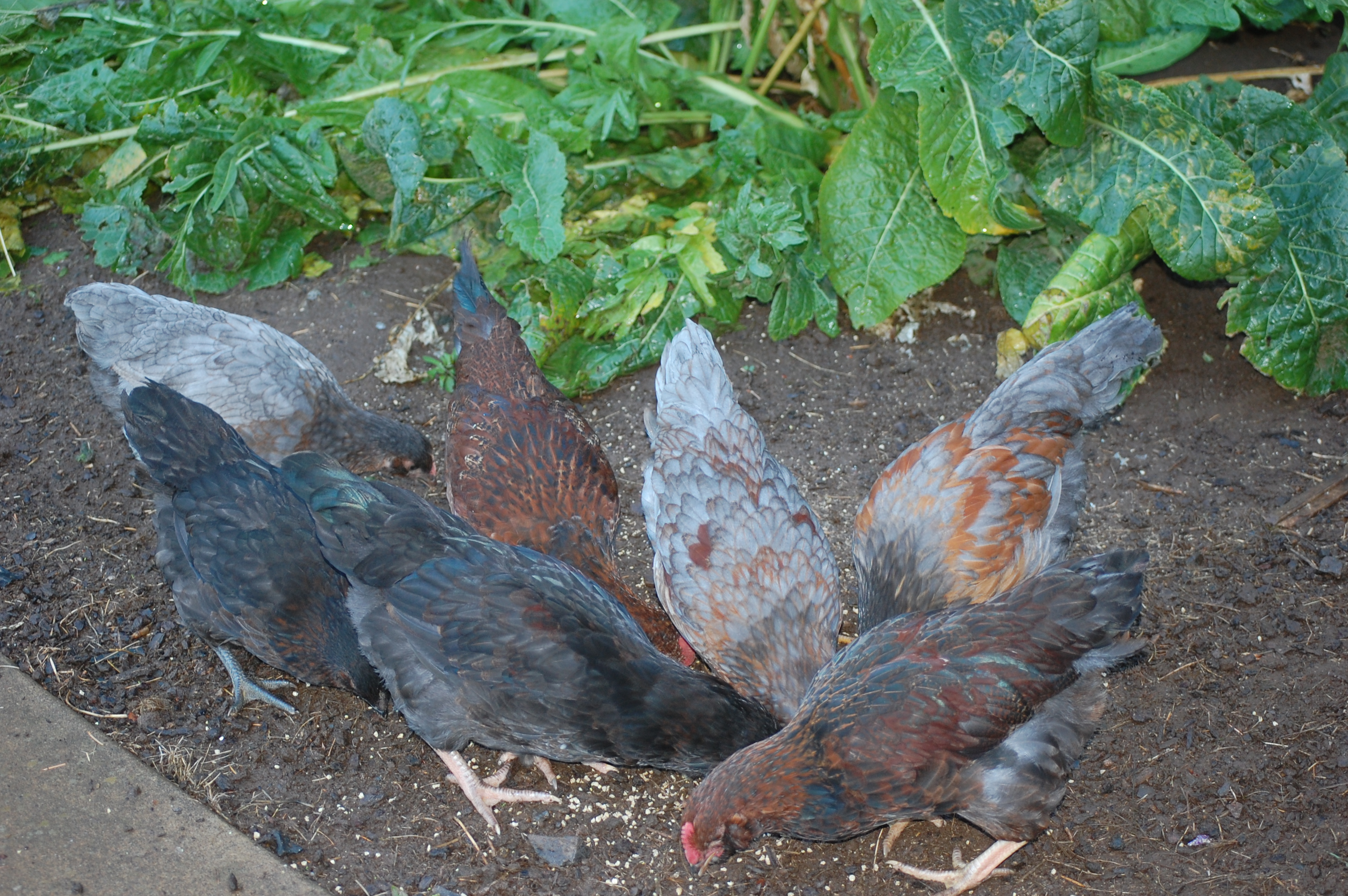
Get access to premium content and more!





